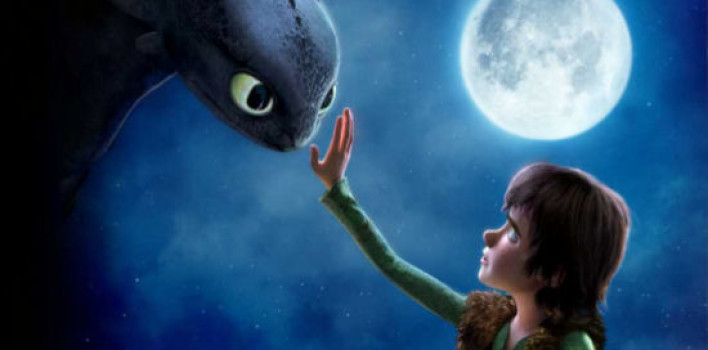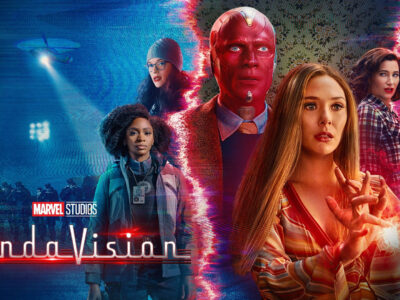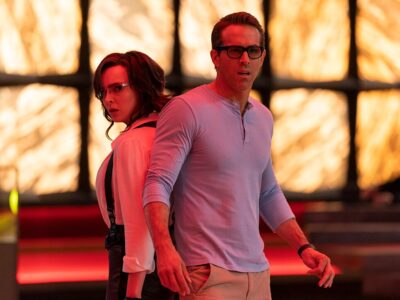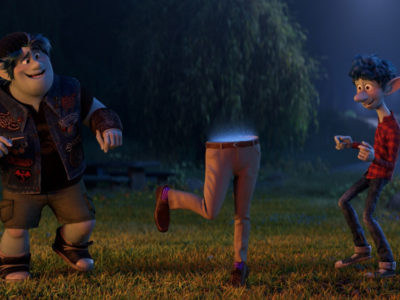How to Train Community
Directed By Dean DeBlois, Chris Sanders
Rated PG
Hiccup: This is Berk. It snows nine months of the year, and hails the other three. Any food that grows here is tough and tasteless. The people that grow here are even more so. The only upsides are the pets. While other places have ponies or parrots… we have… dragons.
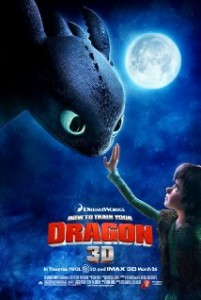 For years Dreamworks has seemed to be the disenfranchised little brother to now giant, Pixar in the world of animated movies, so I was as surprised as anyone when they put out How to Train Your Dragon. Not only did they put out a movie that was more than a knock-off Pixar film (ie. Antz vs A Bug’s Life) , but they put out a film that had a story with depth and meaning. We start to explore this depth as we follow the story of a scrawny, ne’er-do-well-Viking named Hiccup, trying to live up to his father’s expectations, and his unlikely companion Toothless, the most feared dragon known to Viking-kind. The two form a bond that is both frightening and fun to watch develop. Also, much like a Pixar film, both children and adults are asked to deal with some very poignant questions such as “where do I fit in?”, “who will I become?”, “how are we to treat those who oppose us?”, and “what makes something bad or good?”
For years Dreamworks has seemed to be the disenfranchised little brother to now giant, Pixar in the world of animated movies, so I was as surprised as anyone when they put out How to Train Your Dragon. Not only did they put out a movie that was more than a knock-off Pixar film (ie. Antz vs A Bug’s Life) , but they put out a film that had a story with depth and meaning. We start to explore this depth as we follow the story of a scrawny, ne’er-do-well-Viking named Hiccup, trying to live up to his father’s expectations, and his unlikely companion Toothless, the most feared dragon known to Viking-kind. The two form a bond that is both frightening and fun to watch develop. Also, much like a Pixar film, both children and adults are asked to deal with some very poignant questions such as “where do I fit in?”, “who will I become?”, “how are we to treat those who oppose us?”, and “what makes something bad or good?”
“Even so the body is not made up of one part but of many. Now if the foot should say, ‘Because I am not a hand, I do not belong to the body,’ it would not for that reason stop being part of the body. And if the ear should say, ‘Because I am not an eye, I do not belong to the body,’ it would not for that reason stop being part of the body. If the whole body were an eye, where would the sense of hearing be? If the whole body were an ear, where would the sense of smell be? But in fact God has placed the parts in the body, every one of them, just as he wanted them to be. If they were all one part, where would the body be? As it is, there are many parts, but one body. The eye cannot say to the hand, ‘I don’t need you!’ And the head cannot say to the feet, ‘I don’t need you!’ On the contrary, those parts of the body that seem to be weaker are indispensable…” -1 Corinthians 12:12-22 (NIV)
From the beginning of the film, in the very first dragon attack, we see Hiccup: weak, clumsy, but willing. Desperately wanting to prove himself to his father (Stoick, who is also the leader of the village and the most “Viking” of all the Vikings) and the rest of his village, he tries, in his own way, to fight. Though he mostly fails, when he does succeed, he is not encouraged or noticed due to his unorthodox methods or devalued skill-set. In Biblical terms, as far as Berk was concerned, the “eyes” have it. They want to say to the feet that they are not needed. If you do not conform to the way that Vikings have lived for generations, then you are wrong or broken, and you need to be fixed.
Hiccup: Oh, man, I should have gone first… Because, I was thinking, you know, we have a surplus of “dragon-fighting Vikings,” but do we have enough… “bread-making Vikings,” or “small home-repair Vikings”…?
All too often our culture makes us feel as if we are not smart enough or athletic enough or attractive enough to meet the standards of what we see around us. We often see those with jobs or success or attention and wonder why we aren’t more like them, but everyone has their own talents and gifts and though not all of them are as lauded, all are necessary — all have purpose. It’s this truth that turns this movie into something that excites children and should do the same for “grown-ups” too!
Hiccup: Why couldn’t I have killed that dragon when I found him in the woods? Would’ve been better, for everyone…
Astrid: Yep. The rest of us would have done it. So why didn’t you?
Hiccup: I don’t know… I couldn’t.
Astrid: That’s not an answer.
Hiccup: *Why* is this so important to you all of a sudden?
Astrid: Because I want to remember what you say, *right now*.
Hiccup: Oh, for the love of… I was a coward! I was weak! I wouldn’t kill a dragon!
Astrid: You said *wouldn’t*, that time.
Hiccup: Agh, whatever… I *wouldn’t*! Three hundred years, and I’m the first Viking who wouldn’t kill a dragon!
Astrid: First to ride one, though. So…?
Hiccup: I wouldn’t kill him because he looked as frightened as *I* was. I looked at him… and I saw myself.
When Hiccup reaches out his hand to Toothless (in one of the best scenes in the movie), we see Hiccup offering a hand that exemplifies trust and a world of opportunity of reconciliation with the Vikings’ most feared enemies. Instead of “inheriting his parents war,” Hiccup’s role as a peacemaker allows him to not only begin to build a friendship, but also opens his eyes to the plight of the dragons themselves. Hiccup discovers that their understanding of who the dragons are at their core and their motives have been completely misunderstood. All this because Hiccup stops being the Viking that he was taught to be, and allows himself to be the Viking he already was.
At the film’s conclusion we also see a beautiful picture of community in “the body.” Not only are Hiccup’s talents recognized, but we see a more celebrated diversity in the village of Berk between the Vikings and its new dragon citizens. This new family, born from trust and reconciliation, creates an even better body that has more parts — all unique and all important. And through the formation of this new community we see that someone who was thought to be the weakest turned out to be the most indispensable…
Stoick: Turns out all we needed was a little more of…
[gestures to Hiccup] This!
Hiccup: You just gestured to all of me!


